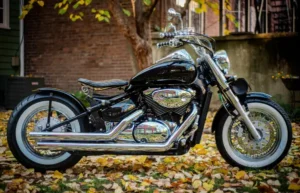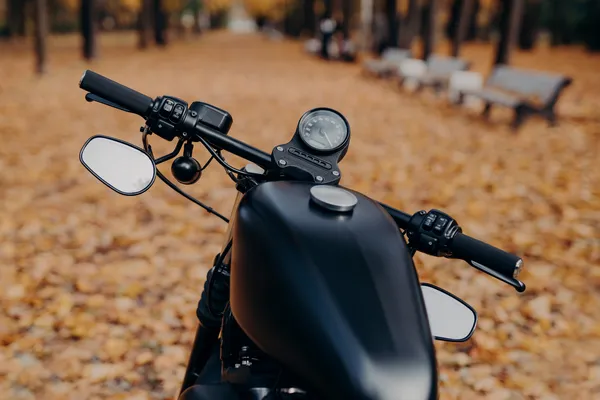
As the summer heat fades and the crisp autumn air rolls in, many motorcyclists eagerly anticipate the beauty and serenity of fall season riding. Fall offers some of the best riding experiences—cooler temperatures, stunning foliage, and less congested roads. However, it also presents unique challenges that require extra caution and preparation. In this article, we’ll explore the essential tips for riding in the fall, covering everything from weather changes and road conditions to gear and bike maintenance.
1. Understanding Fall Weather and Its Impact on Riding
Fall weather is notoriously unpredictable. One moment it’s sunny and cool, and the next, a sudden rain shower or gust of wind can create hazardous conditions. Being aware of these weather changes is crucial for safe riding.
Temperature Fluctuations
One of the biggest challenges of fall riding is the fluctuation in temperature throughout the day. Mornings and evenings can be quite cold, while the midday sun may warm things up significantly. These changes can affect your body’s comfort, as well as how your bike performs.
Tip: Dress in layers. Start with a moisture-wicking base layer to keep sweat away from your skin, followed by an insulating layer to retain heat. Finish with a windproof and waterproof outer layer to protect against cold winds and rain. This way, you can adjust your clothing as the temperature changes.
Shorter Days
As fall progresses, daylight hours decrease, meaning that you may find yourself riding in low-light or dark conditions more often. Reduced visibility can increase the risk of accidents, especially with the sun setting earlier in the day.
Tip: Ensure your bike’s lights are functioning properly. Check your headlights, taillights, and turn signals to ensure they are bright and visible. Wear reflective gear or add reflective tape to your bike to enhance visibility to other drivers.
Wind and Rain
Fall often brings gusty winds and sporadic rain showers. Wet roads can reduce traction, and wind can affect your bike’s stability, especially at higher speeds.
Tip: Slow down and be mindful of your surroundings when riding in the wind or rain. Maintain a safe following distance from other vehicles, as stopping distances increase on wet surfaces. Also, avoid sudden movements or sharp turns, as they can cause your bike to lose traction.
2. Preparing Your Bike for Fall Riding
As the weather cools down, your motorcycle may require some adjustments and maintenance to ensure it performs well during the fall months.
Tire Care
Cold temperatures can cause tire pressure to drop, which affects traction and handling. Additionally, wet leaves and debris on the road can create slippery conditions, making tire care even more critical.
Tip: Regularly check your tire pressure and maintain it at the manufacturer’s recommended levels. Inspect your tires for wear and tear, and replace them if the tread is worn down. Properly inflated tires with good tread provide better grip on wet or slippery surfaces.
Fluid Levels and Battery
Cooler temperatures can also affect your bike’s fluid levels and battery performance. Oil, coolant, and brake fluid may thicken in colder weather, reducing their effectiveness. Your bike’s battery may also drain more quickly in the cold.
Tip: Check and top off all fluid levels before heading out for a ride. Consider switching to a lighter-weight oil for better performance in cooler temperatures. If your battery is old or weak, consider replacing it before the colder months set in.
Chain and Brake Maintenance
Wet roads and fallen leaves can introduce dirt and debris into your bike’s chain and brakes, leading to decreased performance and safety.
Tip: Clean and lubricate your chain regularly to prevent rust and corrosion. Check your brake pads for wear, and ensure your brake lines are in good condition. Responsive brakes are crucial for handling fall road conditions.
3. Navigating Fall Road Hazards
Fall riding can be breathtakingly beautiful, but the season also presents some unique road hazards that require extra caution.
Fallen Leaves
Colorful autumn leaves are one of the highlights of fall, but when they fall onto the road, they can become a significant hazard. Wet leaves can be as slippery as ice, making it difficult for your tires to maintain traction.
Tip: Avoid riding over piles of leaves whenever possible. If you can’t avoid them, slow down and ride smoothly without making sudden movements. Always assume that leaves could be hiding slick spots, potholes, or debris underneath.
Frost and Black Ice
As temperatures drop overnight, frost and black ice can form on the road, especially in shaded areas or on bridges and overpasses. These icy patches can be nearly invisible and pose a serious risk to motorcyclists.
Tip: Be cautious when riding in the early morning or late evening, when frost is most likely to form. Ride slowly and avoid sudden braking or sharp turns in areas where frost or ice may be present.
Wildlife
Fall is also mating and migration season for many animals, particularly deer. As they move around more frequently, the likelihood of encountering wildlife on the road increases, especially in rural or wooded areas.
Tip: Be especially vigilant in the early morning and late evening hours when animals are most active. Slow down and scan the sides of the road for movement. If you see one deer, there are likely more nearby, so be prepared to stop if necessary.
4. Choosing the Right Gear for Fall Riding
Having the right gear can make all the difference in keeping you comfortable and safe during fall rides. The key is to balance protection with comfort, especially as temperatures fluctuate.
Cold-Weather Gloves
Your hands are exposed to the wind and cold while riding, which can lead to discomfort and reduced control of the bike.
Tip: Invest in insulated, waterproof gloves designed for cold-weather riding. Heated grips or heated gloves can also be a game-changer for keeping your hands warm on longer rides.
Thermal Base Layers
Layering is essential for fall riding. A thermal base layer can help trap heat close to your body while wicking away moisture to keep you dry and warm.
Tip: Look for thermal base layers made of materials like merino wool or synthetic fabrics that offer warmth without adding bulk.
Full-Face Helmet
A full-face helmet is ideal for fall riding, as it offers better protection against the cold wind, rain, and debris.
Tip: Consider a helmet with an anti-fog visor or use a fog-resistant spray to prevent your visor from fogging up in colder conditions.
Riding Pants and Jackets
A good pair of riding pants and a jacket with thermal liners can help you stay warm and protected during fall rides.
Tip: Choose gear that is both waterproof and windproof to protect against the elements. Look for jackets and pants with ventilation zippers that allow you to adjust airflow as the temperature changes.
5. Enjoying the Fall Riding Experience
While fall presents its challenges, it’s also one of the most enjoyable seasons for motorcycle enthusiasts. The crisp air, the beautiful scenery, and the quieter roads make for a peaceful and invigorating riding experience.
Plan Scenic Routes
Fall is the perfect time to explore scenic routes that showcase the beauty of the changing leaves and natural landscapes.
Tip: Research popular fall foliage routes in your area or plan a longer ride through national parks or countryside roads. Just be sure to check the weather and road conditions ahead of time.
Group Rides
Fall is a great time for group rides, as the cooler temperatures make longer rides more comfortable.
Tip: Plan a group ride with fellow motorcyclists to share the experience of fall riding. Riding with others also adds an extra layer of safety, as you can help each other navigate any challenges that arise.
Fall season riding offers a unique and enjoyable experience for motorcyclists, with its cooler temperatures, beautiful scenery, and quieter roads. However, the season also comes with its own set of challenges, from unpredictable weather and road hazards to the need for specialized gear. By preparing your bike, choosing the right gear, and being aware of the road conditions, you can enjoy a safe and memorable ride this fall. Whether you’re navigating through vibrant autumn foliage or taking on the challenges of cooler weather, fall is a season that every motorcyclist can appreciate with the right precautions in place.




